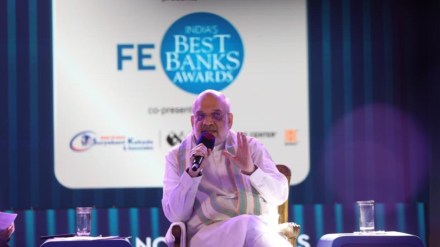Union home minister Amit Shah is absolutely right in asking the country’s banks to focus on scaling up. Indeed, for an economy that’s the fourth-biggest in the world, India’s banking system is disproportionately small. Indian banks, the home minister said at the Financial Express Best Banks Awards on Thursday, should no longer just plan for growth, rather they must start thinking of figuring among the top 10 banks in the world. That’s a long journey as at present, just two banks find a place in the list of the world’s top 100 banks by assets, with State Bank of India ranking 43rd. Outstanding credit, on a deposit base of `237 lakh crore, is a relatively small Rs 188 lakh crore. To be sure, nearly half of the total resources raised by corporates were from the equity and bond markets and loans from shadow lenders. Nonetheless, banks are the biggest lenders and should drive the economy.
Imperative of inorganic growth: The case for consolidation
Since it will be hard for lenders to grow by more than 10-12% annually on a sustained basis, we need to explore the inorganic route. The National Democratic Alliance government did well to initiate the first round of consolidation when a clutch of 10 public sector banks were merged to create four entities. That process now needs to be taken forward with the amalgamation of smaller PSU PSUlenders into their bigger peers because staying small doesn’t justify the economics of the business. To be sure, these are politically difficult decisions and cannot be implemented overnight but it would appear the government is working to create some bigger state-owned lenders. Combinations of banks that de-risk geographical and portfolio biases would create robust entities.
Easing the path for private sector mergers
Such initiatives need to be pursued in the private sector as well because there are too many small lenders. While small finance banks were created to channel funds to certain segments of borrowers, the risks can be high as we have seen in the case of the microfinance sector. Typically, most of the bigger players are reluctant to acquire a smaller bank or non-banking financial company because mergers are hard to digest and it takes years to derive any tangible benefits.
Moreover, the Reserve Bank of India (RBI) is often unwilling to offer regulatory forbearance, for instance on maintaining the statutory liquidity ratio. This can make mergers very expensive. Since it would benefit the economy to have bigger and stronger lenders so that the systemic risk is reduced, the RBI may want to consider some regulatory easing with a view to facilitating mergers and acquisitions in the financial system. To be sure, a final nod from the regulator would be mandatory but a pre-determined set of regulations might encourage some to buy out businesses.
Shah has also exhorted lenders to channel credit to micro, small, and medium enterprises (MSMEs). While the sector certainly deserves more attention, bankers have been exploring the space. Bank lending to MSMEs may have moderated to 11.5% in FY25 but that was on the back of a very strong increase of 22.6 and 17.8% in FY24 and FY23 respectively. In the first four months of FY26, the share of loans to MSMEs has been a fairly high 23% compared with 18% in FY25. However, with some businesses being impacted by the US tariffs, lenders are likely to become cautious. The government must come up with a scheme similar to ECLGS (emergency credit line guarantee scheme) to support lenders. However, bankers should ensure that deserving units do get access to credit.
